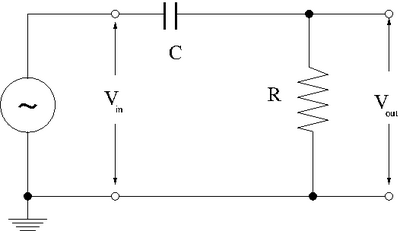Difference between revisions of "Lab 4 RS"
| Line 112: | Line 112: | ||
==Sketch the phasor diagram for <math>V_{in}</math>,<math> V_{out}</math>, <math>V_{R}</math>, and <math>V_{C}</math>. Put the current <math>I</math> along the real voltage axis. (30 pnts)== | ==Sketch the phasor diagram for <math>V_{in}</math>,<math> V_{out}</math>, <math>V_{R}</math>, and <math>V_{C}</math>. Put the current <math>I</math> along the real voltage axis. (30 pnts)== | ||
| + | |||
| + | [[File:l4_Phase_diagram.png | 600 px]] | ||
| + | |||
==What is the phase shift <math>\theta</math> for a DC input and a very-high frequency input?(5 pnts)== | ==What is the phase shift <math>\theta</math> for a DC input and a very-high frequency input?(5 pnts)== | ||
==Calculate and expression for the phase shift <math>\theta</math> as a function of <math>\nu</math>, <math>R</math>, <math>C</math> and graph <math>\theta</math> -vs <math>\nu</math>. (20 pnts)== | ==Calculate and expression for the phase shift <math>\theta</math> as a function of <math>\nu</math>, <math>R</math>, <math>C</math> and graph <math>\theta</math> -vs <math>\nu</math>. (20 pnts)== | ||
Revision as of 06:13, 26 January 2011
- RC High-pass filter
1-50 kHz filter (20 pnts)
1. Design a high-pass RC filter with a break point between 1-50 kHz. The break point is the frequency at which the filter's attenuation of the AC signal goes to 0(not passed). For a High pass filter, AC signals with a frequency below the 1-50 kHz range will be attenuated .
- To design low-pass RC filter I had:
So
2. Now construct the circuit using a non-polar capacitor.
3. Use a sinusoidal variable frequency oscillator to provide an input voltage to your filter.
4. Measure the input and output voltages for at least 8 different frequencies which span the frequency range from 1 Hz to 1 MHz.
| 0.1 | |||
| 1.0 | |||
| 2.0 | |||
| 3.0 | |||
| 4.0 | |||
| 5.0 | |||
| 6.0 | |||
| 7.0 | |||
| 8.0 | |||
| 9.0 | |||
| 10.0 | |||
| 11.0 | |||
| 12.0 | |||
| 15.0 | |||
| 20.0 | |||
| 30.0 | |||
| 40.0 | |||
| 50.0 | |||
| 100.0 | |||
| 200.0 |
5. Graph the -vs-
phase shift (10 pnts)
- measure the phase shift between and
Questions
Compare the theoretical and experimentally measured break frequencies. (5 pnts)
Calculate and expression for as a function of , , and .(5 pnts)
We have:
Dividing second equation into first one we get the voltage gain:
And we are need the real part:
Compare the theoretical and experimental value for the phase shift . (5 pnts)
The experimental phase shift is
The theoretical phase shift is
Sketch the phasor diagram for ,, , and . Put the current along the real voltage axis. (30 pnts)
What is the phase shift for a DC input and a very-high frequency input?(5 pnts)
Calculate and expression for the phase shift as a function of , , and graph -vs . (20 pnts)
Forest_Electronic_Instrumentation_and_Measurement Go Back to All Lab Reports
